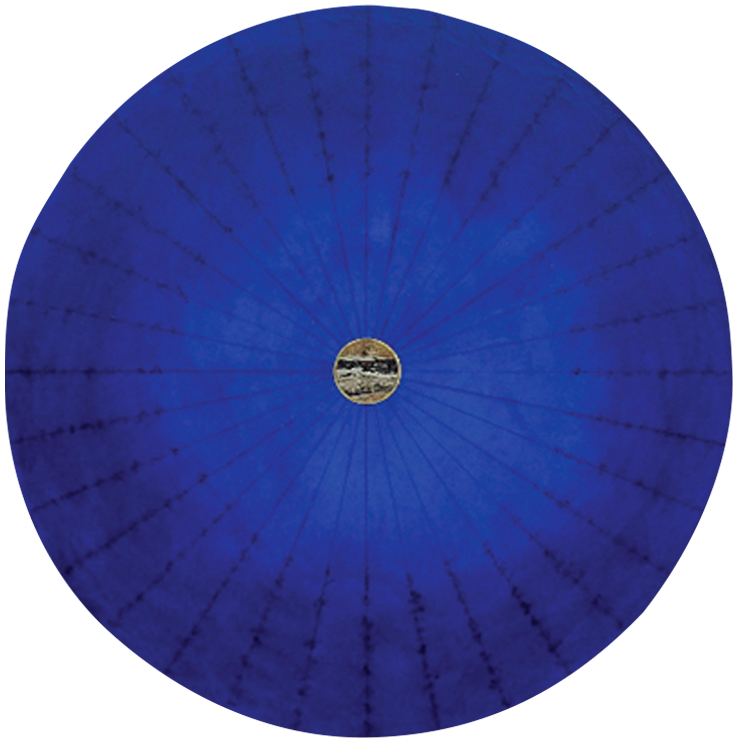BIOGRAPHIE COMPLÈTE
ET UN JOUR …
Une vie entre musique et couleur
One life between music and color
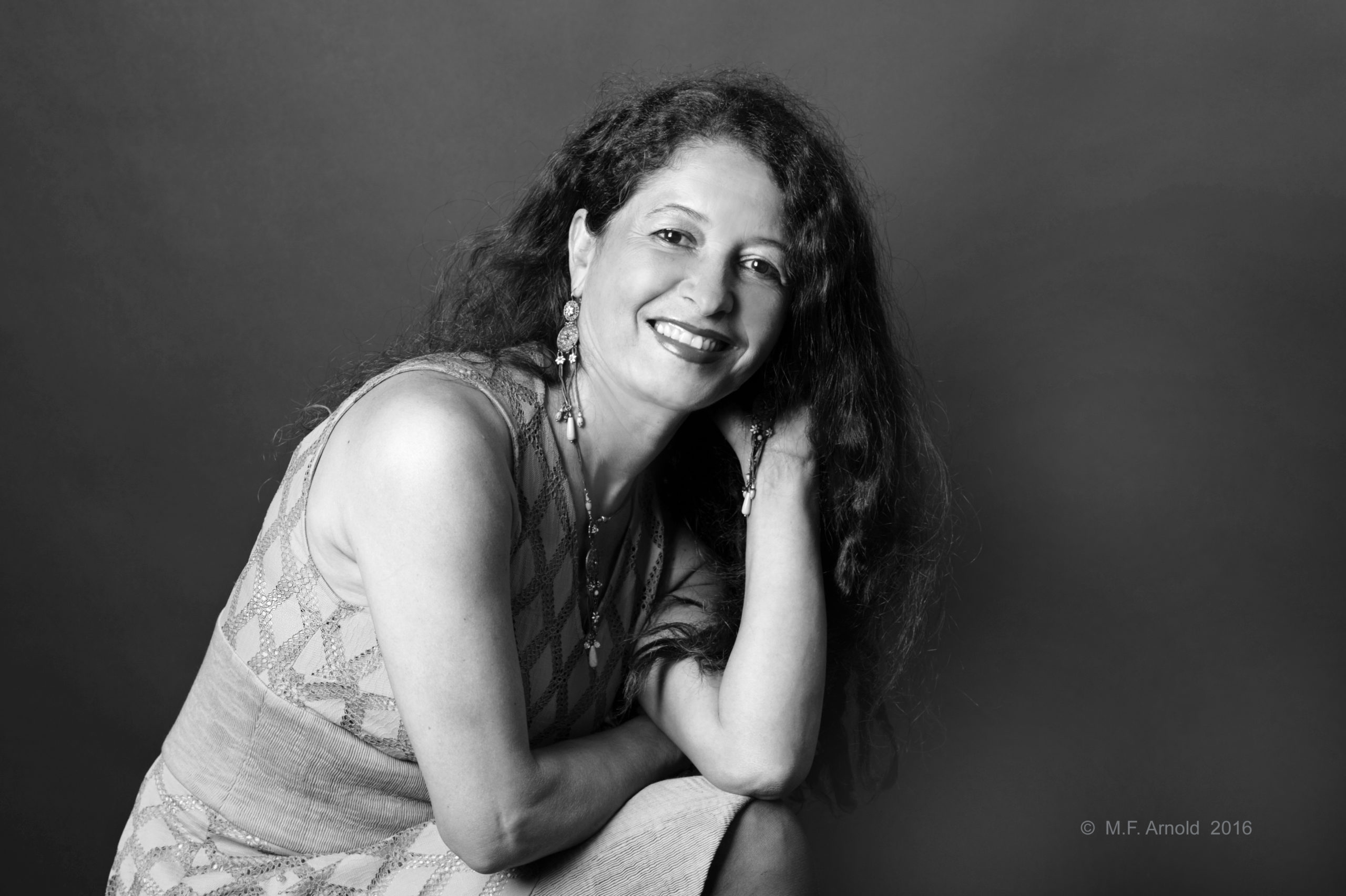
La Biographie Complète/ Complete Biography
Et un jour…/And a day…
Your content goes here. Edit or remove this text inline or in the module Content settings. You can also style every aspect of this content in the module Design settings and even apply custom CSS to this text in the module Advanced settings.

Faculté de Beaux Arts de São Paulo
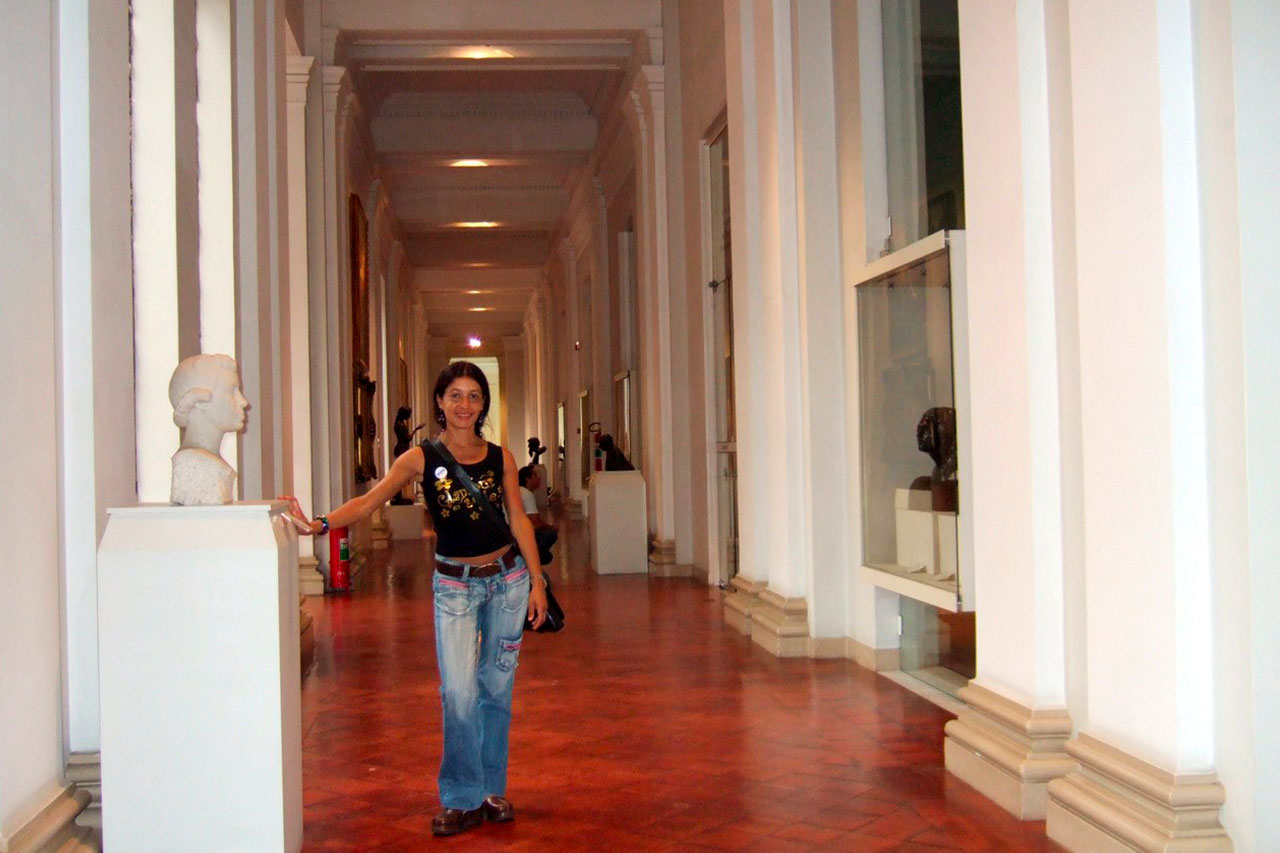
Faculté de Beaux Arts de São Paulo
Miriam Da Silva est née à São Paulo le 08 mars 1964.
Après avoir fini ses études secondaires au collège Therezinha Sartori et obtenu la maturité, elle décide de s’inscrire dans l’examen d’entrée à La Faculté de Beaux Arts de São Paulo. Elle réussit le concours d’entrée, commence à étudier en 1983 et obtient la « Licence en arts plastiques » en 1986. Pendant deux ans, de 1987 à 1988 après avoir réussi un concours public à l’État de São Paulo, elle enseigne l’éducation artistique dans deux écoles publiques à la ville de Mauá, dans l’État de São Paulo.
Pendant cette période elle étudie aussi piano classique avec la pianiste Helena Scheffel et plus tard avec le pianiste Harley Andry Bleck Gonzalez en même temps qu’elle étudie la musique à la Fondation des Arts de São Caetano do Sul et chante dans une chorale dans la ville de Santo André, État de São Paulo. Cette chorale interprète entre autres, des œuvres de Johann Sebastian Bach, Beethoven e Villa-Lobos.
Miriam Da Silva was born in São Paulo on March 08, 1964.
After finishing her secondary studies at Therezinha Sartori College and graduating, she decides to register for the entrance examination at The Faculty of Fine Arts in São Paulo. She passed the entrance examination, began to study in 1983 and obtained the « Bachelor of Plastic Arts » in 1986. For two years, from 1987 to 1988 after having passed a public competition in the State of São Paulo, she taught arts education in two public schools in the city of Mauá, in the state of São Paulo.
During this period she also studied classical piano with pianist Helena Scheffel and later with pianist Harley Andry Bleck Gonzalez at the same time as she studied music at the Foundation of the Arts of São Caetano do Sul and sang in a choir in the city. from Santo André, State of São Paulo. This choir performs, among others, works by Johann Sebastian Bach, Beethoven e Villa-Lobos.
En 1989 après avoir rencontré l’artiste et architecte Davis Leichsenring au Masp Musée d’Art de São Paulo, elle décide de voyager en Europe, avide de connaissances et de nouvelles découvertes. Elle arrive à Genève en 1989 et découvre une vie culturelle intense et intéressante avec le mélange de plus de 100 différentes cultures. Elle étudie le français pendant cinq ans et obtient le diplôme de langue et littérature française de l’Alliance Française. Plus tard elle étudie le graphisme à l’Ifage – Institut de Formation des adultes et l’anglais. Pendant cette période elle dessine et peint également.
À cette époque elle décide de voyager plus souvent en Europe et découvre des villes comme Paris, Londres, Amsterdam, Viena, Munique, Madrid, Barcelone, Florence, Siena, etc.
En 1993 elle décide d’aller à Rome pour un certain temps où elle découvre le travail de plusieurs artistes et en particulier celui de Carlo Roselli avec qui elle apprend la technique de la peinture à l’huile à la manière ancienne et la « têmpera », selon la méthode de la renaissance. De cette période romaine jailliront une série de 10 peintures ayant comme inspiration les colonnes du « Foro romano ».
En 1994 elle décide encore de voyager et part à Londres pour étudier et pratiquer l’anglais.
Aussi en 1994 elle s’inscrit à l’Université d’Aix–en-Provence pour étudier l’histoire de l’art. Elle réussit le concours d’entrée mais décide d’abandonner pour s’approfondir ses études en arts plastiques et se dédier à son travail d’artiste.
In 1989 after meeting artist and architect Davis Leichsenring at the Masp Museum of Art in São Paulo, she decided to travel to Europe, eager for knowledge and new discoveries. She arrived in Geneva in1989 and discovered an intense and interesting cultural life with the mixture of more than 100 different cultures. She studied French for five years and obtained a diploma in French language and literature from the Alliance Française. Later she studied graphic design at Ifage -Adult Training Institute and English.
During this period she also draws and paints.At that time she decided to travel more often to Europe and discovered cities like Paris, London, Amsterdam, Vienna, Munique, Madrid, Barcelona, Florence, Siena, etc.
In 1993 she decided to go to Rome for a while where she discovered the work of several artists and in particular that of Carlo Roselli with whom she learned the technique of oil painting in the old way and « tempera » , according to the rebirth method. From this Roman period sprang a series of 10 paintings inspired by the columns of the “Foro Romano”.
In 1994 she decided to travel again and left for London to study and practice English.
So in 1994 she enrolled at the University of Aix-en-Provence to study the history of art. She passed the entrance exam but decided to drop out to pursue her studies in visual arts and devote herself to her work as an artist.
De retour à Genève elle commence à réaliser une série de peintures inspirées par la période romaine et s’aperçoit que sa manière de travailler la peinture a changé après la technique apprise à Rome, donnant à sa peinture un ton bien plus profond où l’ombre et lumière se côtoient de manière bien plus intense. Le thème de la musique et la synergie avec la peinture revient avec force, renouvelé par cette façon inédite de travailler la couleur.
Pendant cette période elle produit beaucoup et commence à exposer son travail. Sa première exposition a lieu à La Maison Visinand et à l’Auditorium Stravinski de la ville de Montreux, en Suisse Romande. Dans cette exposition il y aura l’intervention d’un groupe de théâtre et un concert de musique populaire brésilienne avec des musiciens brésiliens de la région. Une autre exposition suit à Lausanne et cette fois-ci avec la participation de danseurs et de performers. Miriam Da Silva a toujours privilégié l’intervention d’autres artistes dans ses expositions.
Encore en 1995 elle s’inscrit à « l’École Supérieure de Genève, l’actuelle HES – Haute École d’Art et de Design », pour réaliser un master en arts plastiques. Elle réussit le concours et prépare alors le « Troisième cycle de perfectionnement ». À l’ESAV elle étudie la gravure, la sculpture en métal, les techniques mixtes et l’histoire de l’art contemporain. Cette période sera riche et Miriam Da Silva produira beaucoup de peintures, de gravures et des sculptures en métal. Elle obtient le diplôme en 1998. À partir de ce moment son fil conducteur sera définitivement la musique en synergie avec les arts plastiques.
En 1997 elle rencontre Manfred Knobel, suisse d’origine alémanique. Elle se marie et deux enfants naissent de cette union, Saskia et Alexander. Elle obtient également la nationalité suisse.
En 1999 elle reçoit le prix de peinture contemporaine de l’Institut National Genevois.
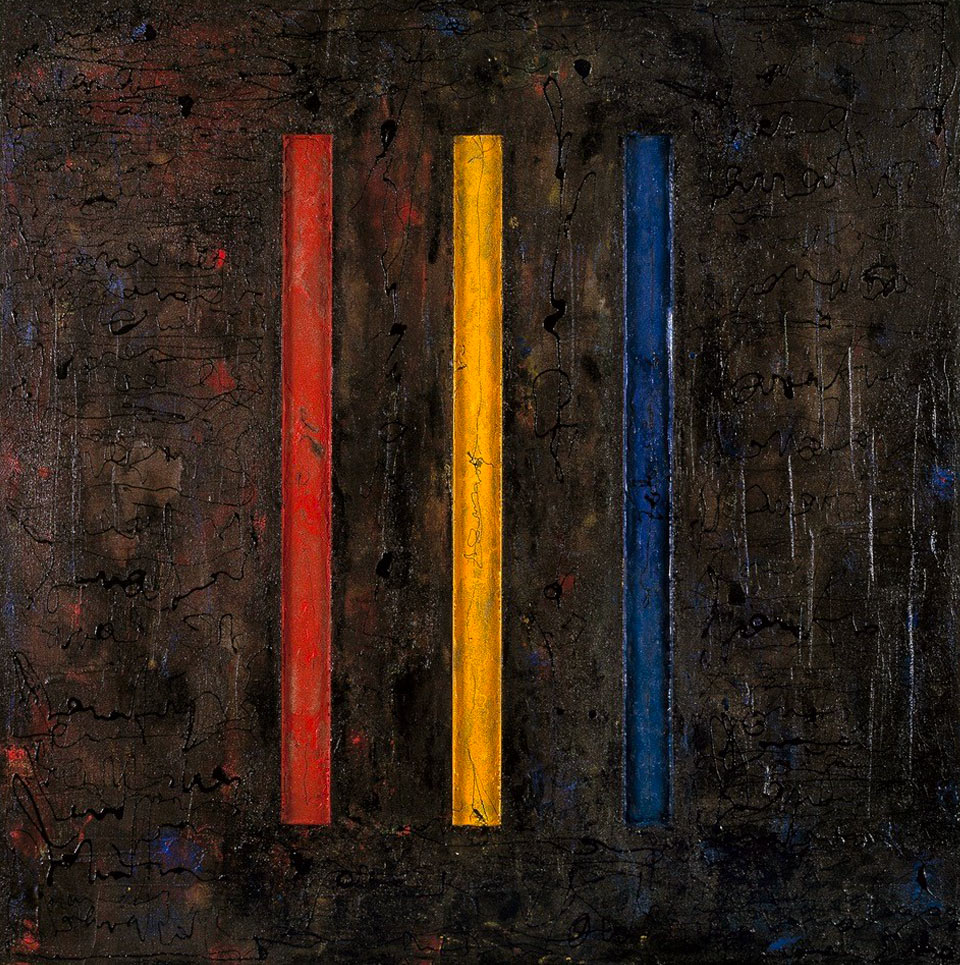
Variation sur trois tons
Collection de l’Institut National Genevois
Prix du salon d’automne 1999
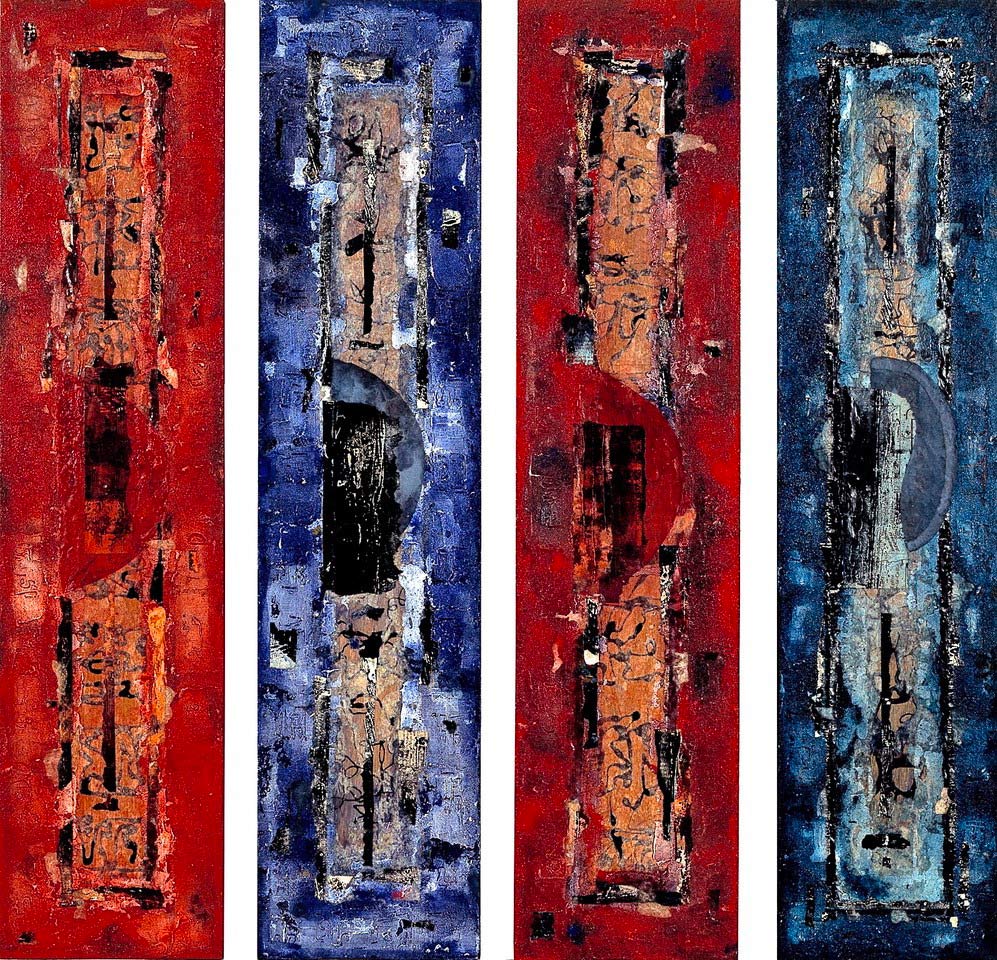
Impressions et empreintes chaudes et froides II
1999 – Collection privée Suisse
Back in Geneva, she began to produce a series of paintings inspired by the Roman period and noticed that her way of working with painting had changed after the technique learned in Rome, giving her painting a much deeper tone where shadow and light come together in a much more intense way. The theme of music and the synergy with painting comes back with force, renewed by this unique way of working with color.
During this period she produced a lot and began to exhibit her work. His first exhibition took place at La Maison Visinand and at the Auditorium Stravinski in the city of Montreux,in French-speaking Switzerland. In this exhibition there will be the intervention of a theater group and a concert of popular Brazilian music with Brazilian musicians from the region. Another exhibition follows in Lausanne and this time with the participation of dancers and performers. Miriam Da Silva has always favored the intervention of other artists in her exhibitions.
Again in 1995 she enrolled at the « École Supérieure de Genève, now HES -Haute École d ‘Art et de Design », to complete a master’s degree in visual arts. She passes the competition and then prepares for the « Third cycle of improvement ». At ESAV she studies engraving, metal sculpture, mixed media and the history of contemporary art. This period will be rich, and Miriam Da Silva will producemany paintings, engravings and metal sculptures. She graduated in 1998. From that moment her common thread will be music in synergy with the visual arts.
In 1997 she met Manfred Knobel, a Swiss of German origin. She married and two children were born fromthis union, Saskia and Alexander. She also obtains Swiss nationality.
In 1999 she received the prize for contemporary painting from the Institut National Genevois.
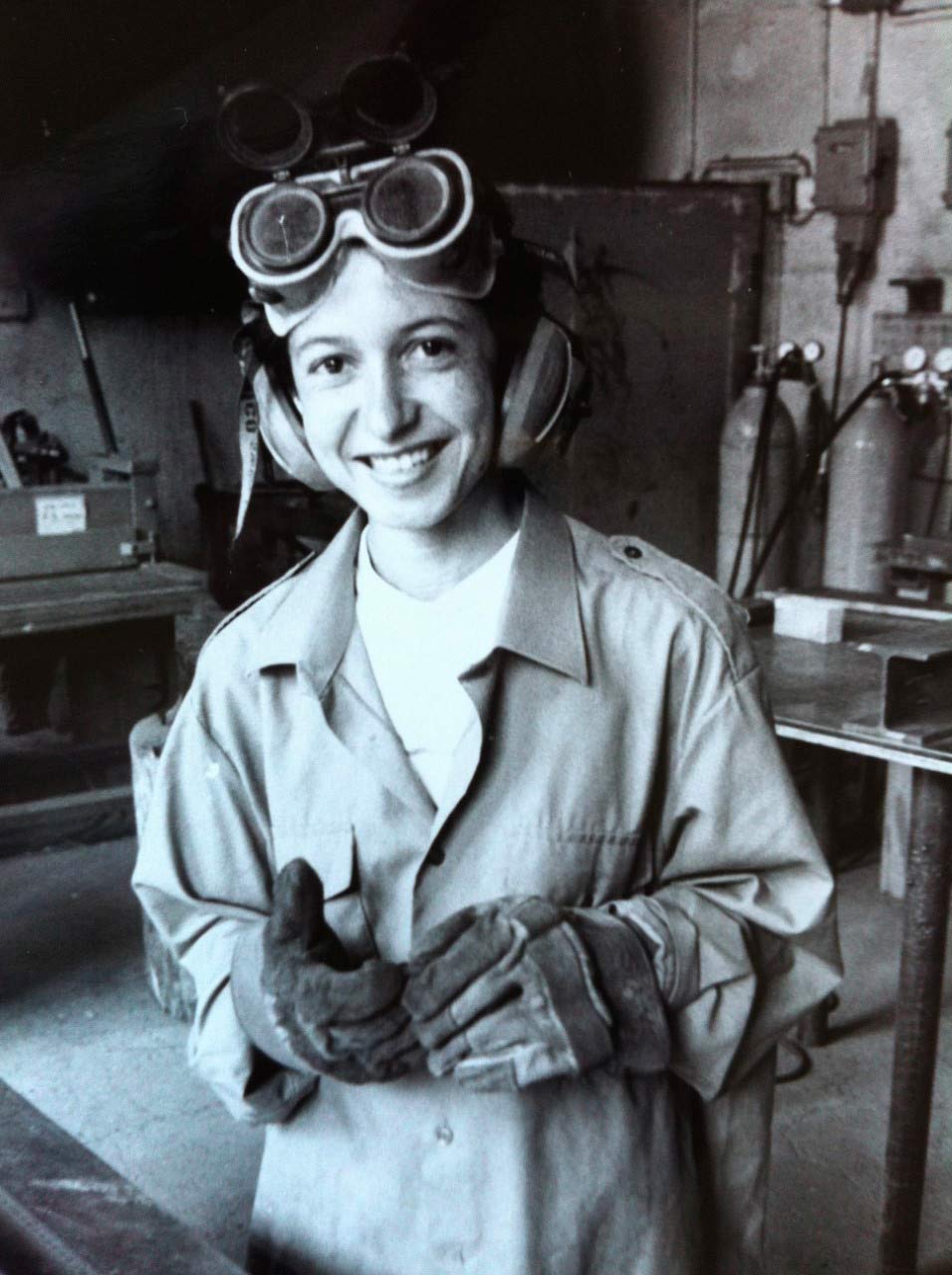
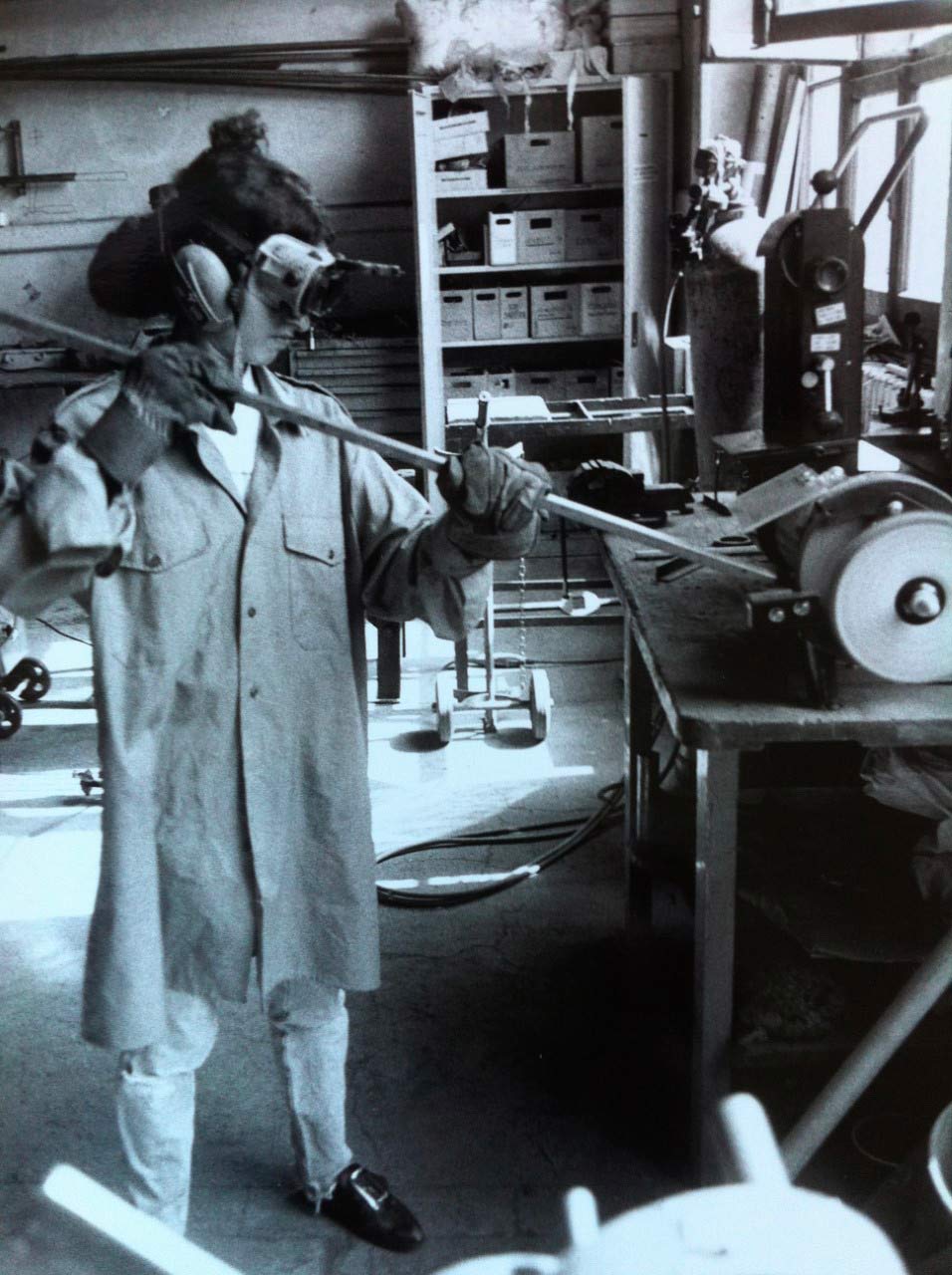

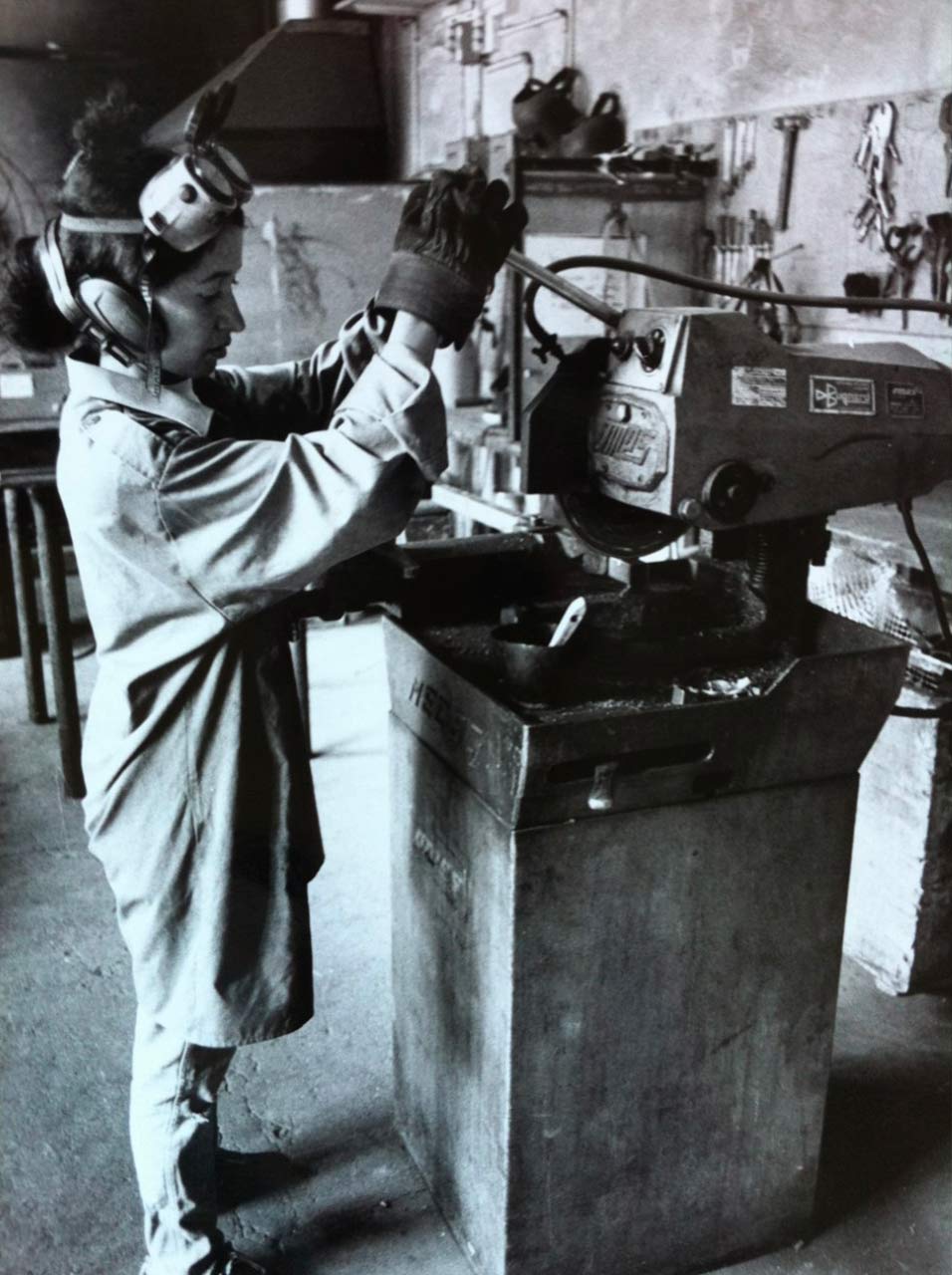
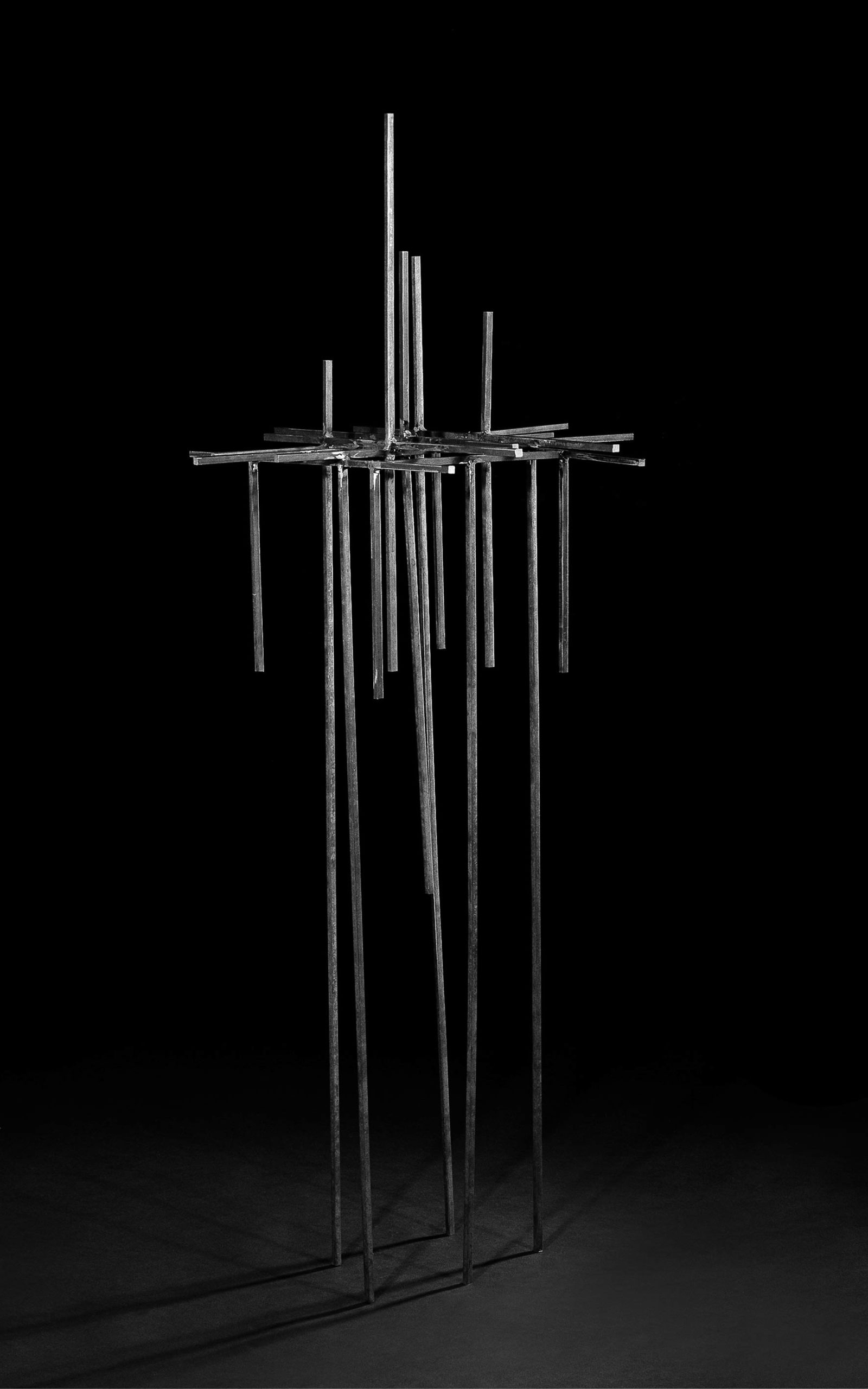
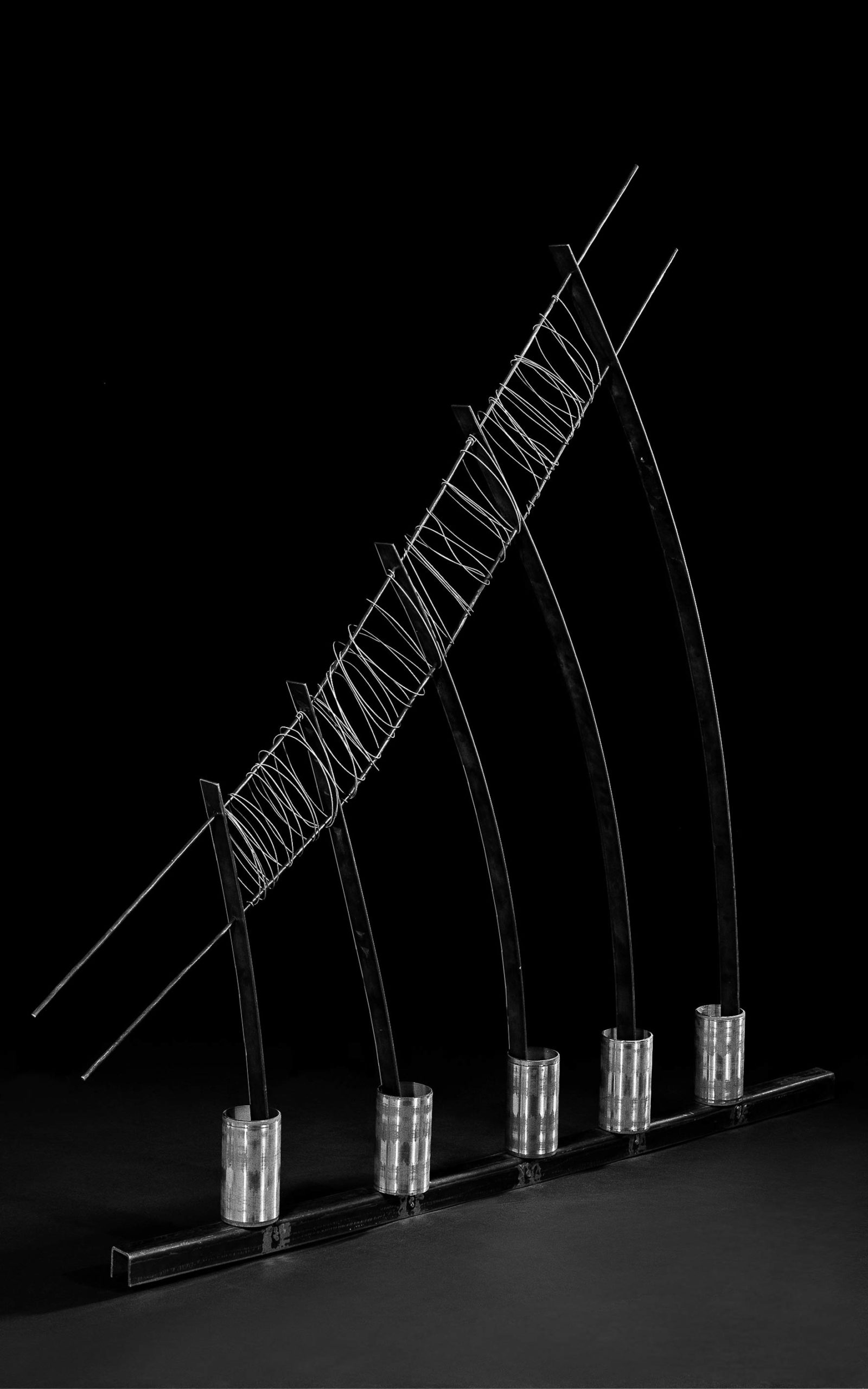
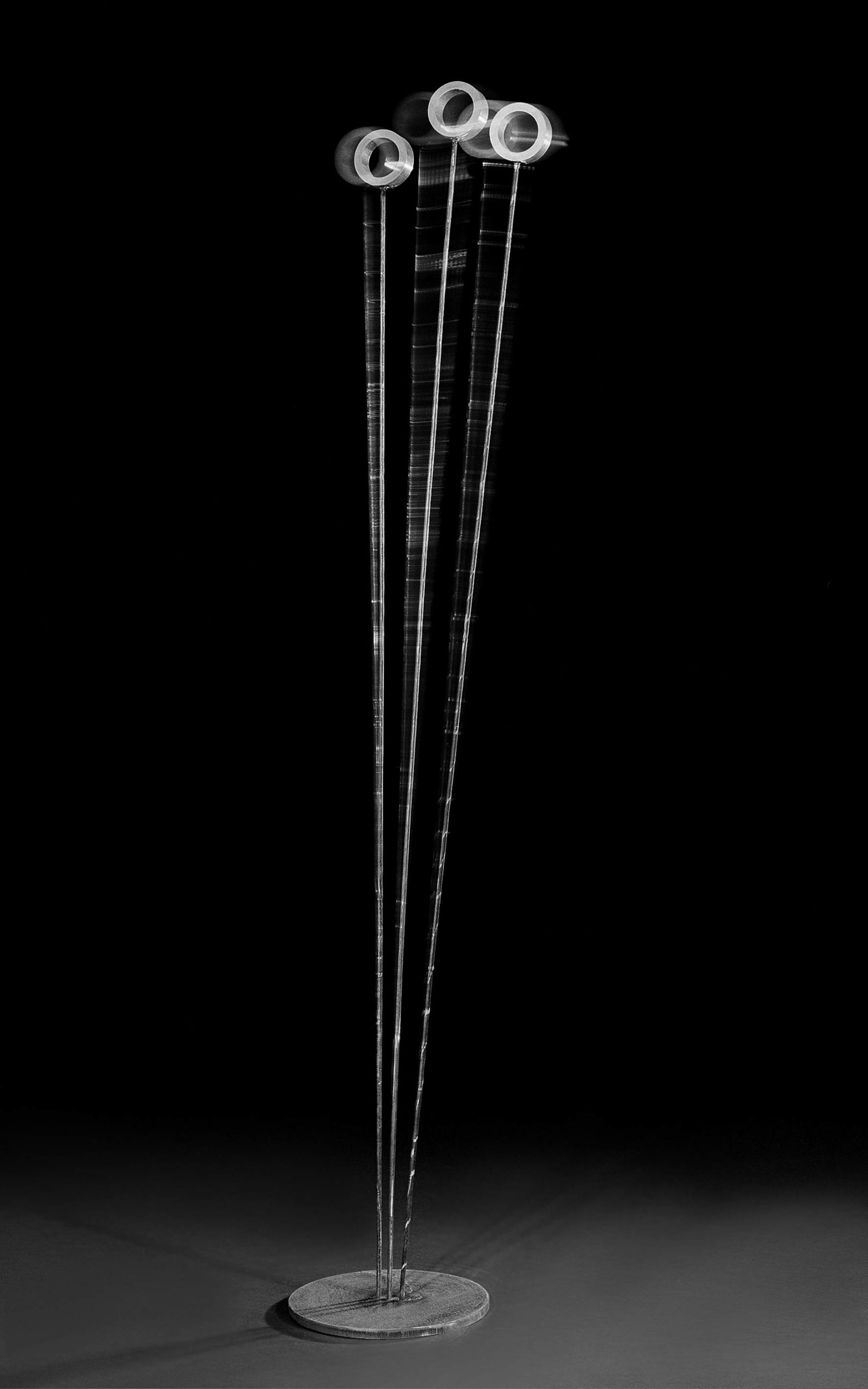
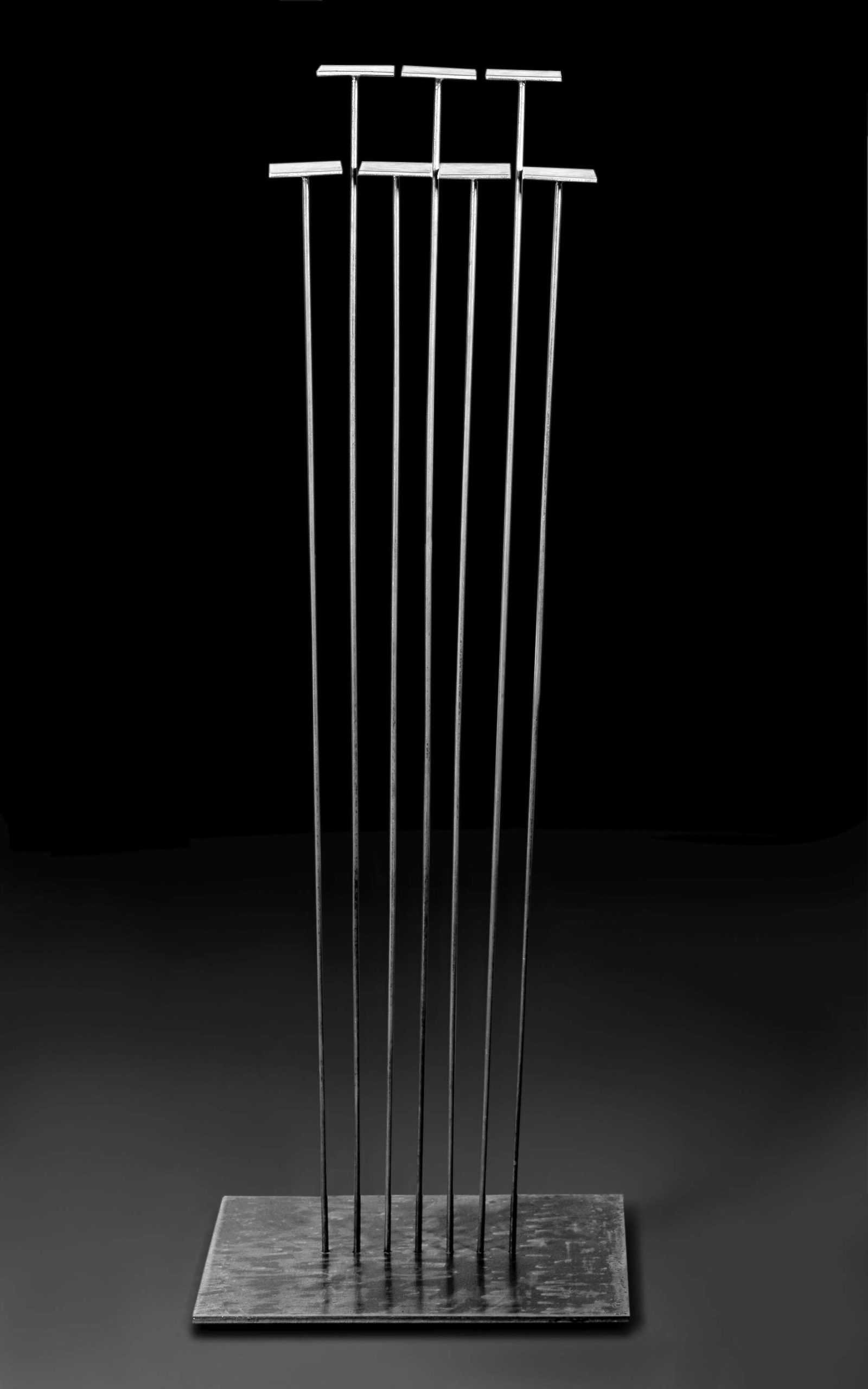
Grande mélomane, Miriam Da Silva apprécie des compositeurs tels que Villa-Lobos, Pixinguinha, Tom Jobim, Egberto Gismonti, Hermeto Paschoal, le groupe UAKTI, Tom Zé, Edu Lobo, et plus récemment André mehmari, Andres Beeuwsaert, Alexandre Andrés, Diego Schissi, pour n’en citer que quelques uns. Elle apprécie également compositeurs universels allant du classique au jazz comme Johann Sebastian Bach, Serguëi Rachmaninov, Frédéric Chopin, Franz Liszt, Gustav Mahler, Béla Bartok et contemporains comme Steve Reich, Philip Glass, Pat Metheny, Arvö Part, Richard Galliano ; maîtres du Jazz comme Miles Davis, Chic Corea, Ella Fitzgerald, Billie holliday et en particulier la chanteuse portugaise de jazz Maria João et le pianiste de jazz Mario Laginha entre autres.
L’émotion que la musique de ces compositeurs et celle de tant d’autres lui procure au moment de la conception d’un tableau, dessin, gravure ou sculpture, est d’une intensité telle, que cela va influencer le résultat final de son travail.
Miriam Da Silva « voit couleurs » en écoutant ce genre de musique en même temps qu’elle compose déjà des « futurs tableaux ». La musique rentre ainsi en force dans son acte créateur générant tout de suite cette synergie qu’elle cherche dans ce dialogue musico – pictural.
A great music lover, Miriam Da Silva appreciates composers such as Villa-Lobos, Pixinguinha, Tom Jobim, Egberto Gismonti, Hermeto Paschoal, the UAKTI group, Tom Zé, Edu Lobo, and more recently André mehmari, Andres Beeuwsaert, Alexandre Andrés, Diego Schissi , to only cite a few. She also appreciates universal composers ranging from classical to jazz such as Johann Sebastian Bach, Serguëi Rachmaninov, Frédéric Chopin, Franz Liszt, Gustav Mahler, Béla Bartok and contemporaries such as Steve Reich, Philip Glass, Pat Metheny, Arvö Part, Richard Galliano; Master of Jazz like Miles Davis, ChickCorea, Ella Fitzgerald, Billie Holliday and in particular the Portuguese jazz singer Maria João and the jazz pianist Mario Laginha among others.
The emotion that the music of these composers and that of so many others gives her at the time of the conception of a painting, drawing, engraving or sculpture, is of such intensity, that it will influence the final result of his sound job.
Miriam Da Silva « sees colors » while listening to this kind of music at the same time as she is already composing « future paintings ». The music thus returns in force in its creative act immediately generating this synergy that it seeks in this musical-pictorial dialogue.
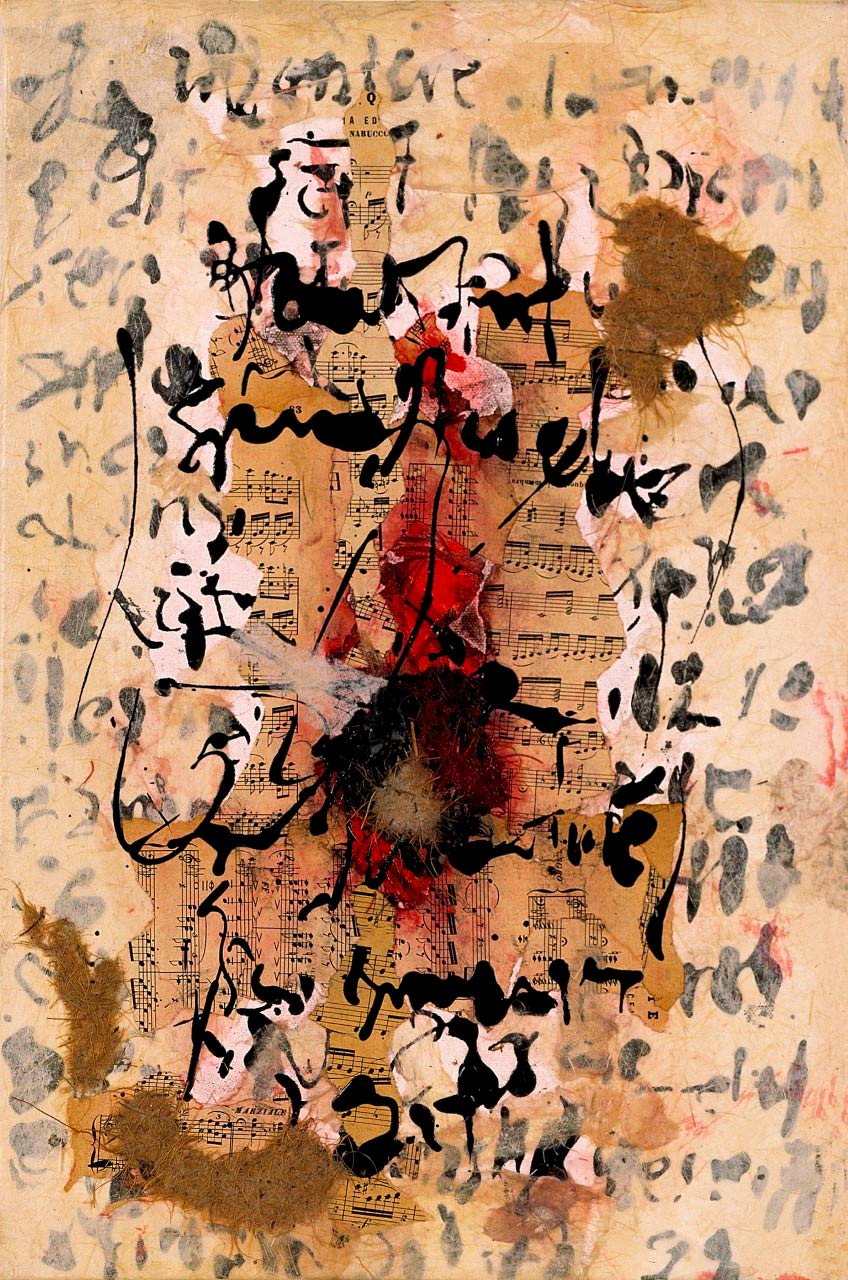
Escritura musical
Papiers, laque noire et partition sur toile
40 x 28 cm
1995
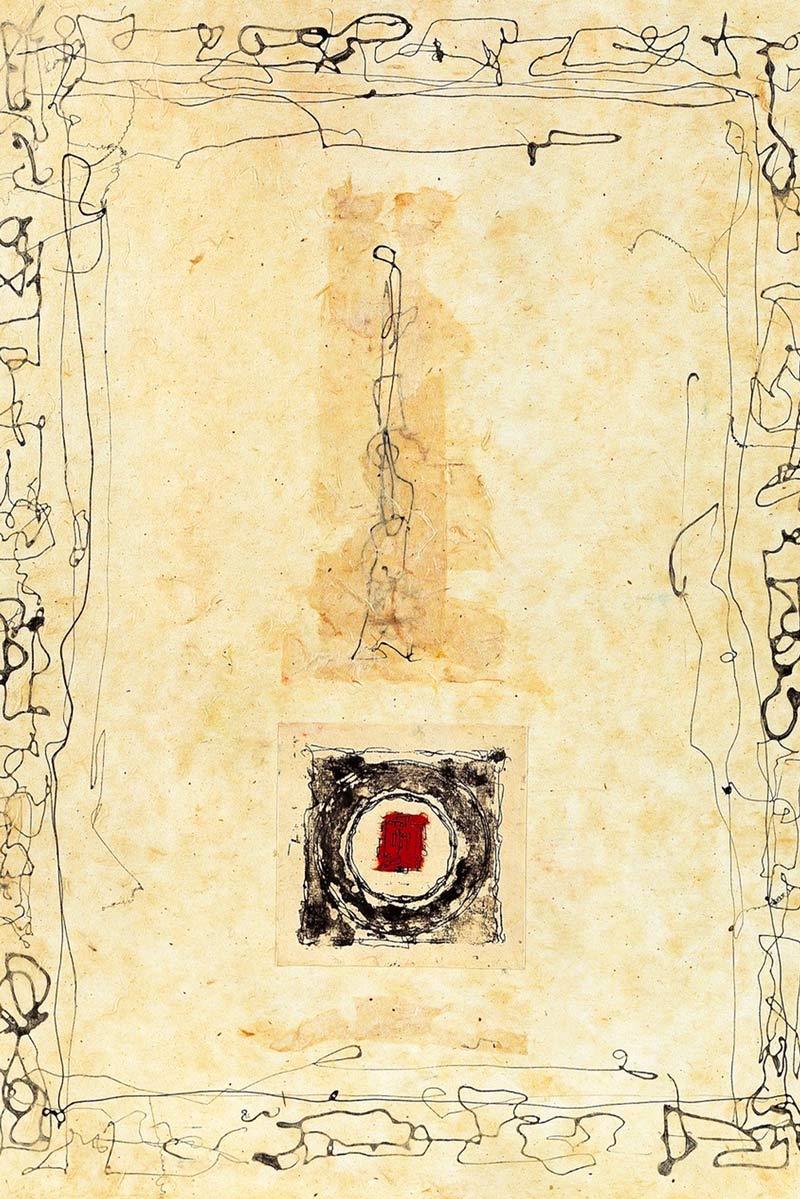
Ton et signe avenant
Laque noire, papier népalaise-forte et bouts d’eau-forte sur toile sur toile
50 x 35 cm
1997
Collection privée Suisse
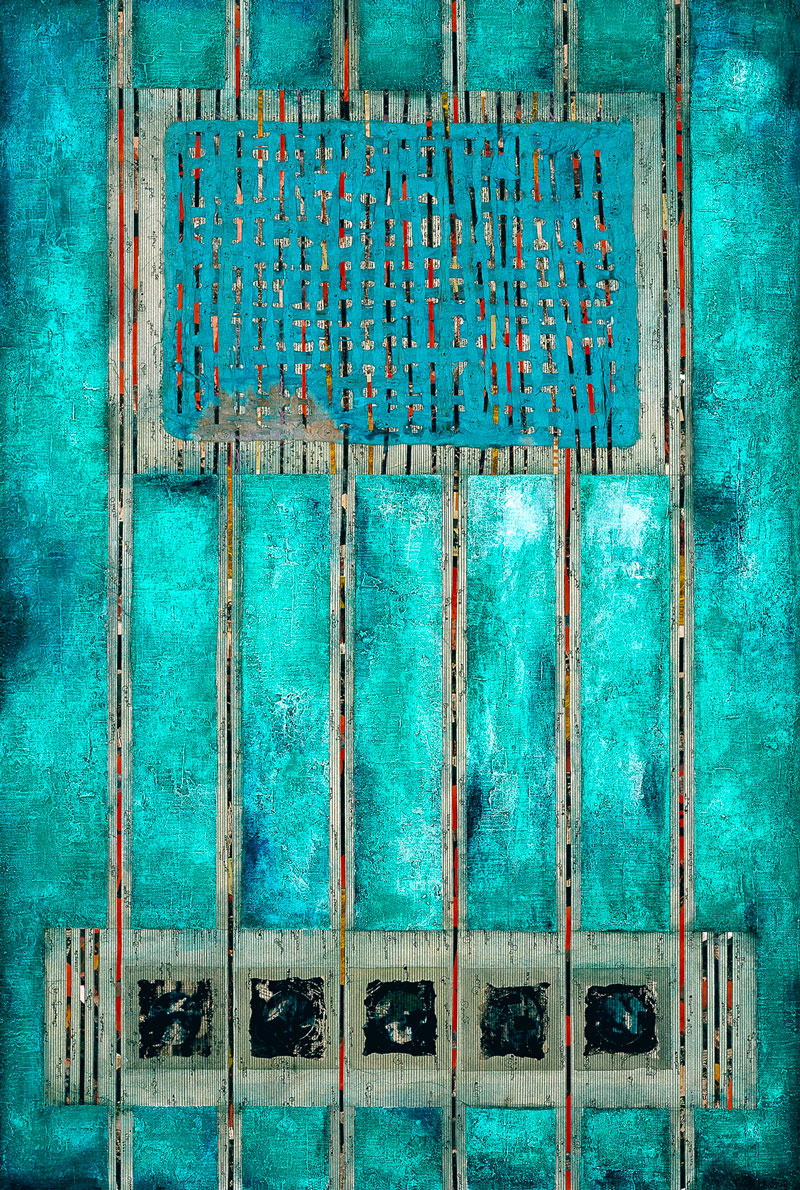
Petites fourmis – écritures sur sol turquoise
Huile, pigments, matières, papiers, papier mexicain, monotypes et encre de Chine sur toile sur toile
150 x 100 cm
2005
Collection privée
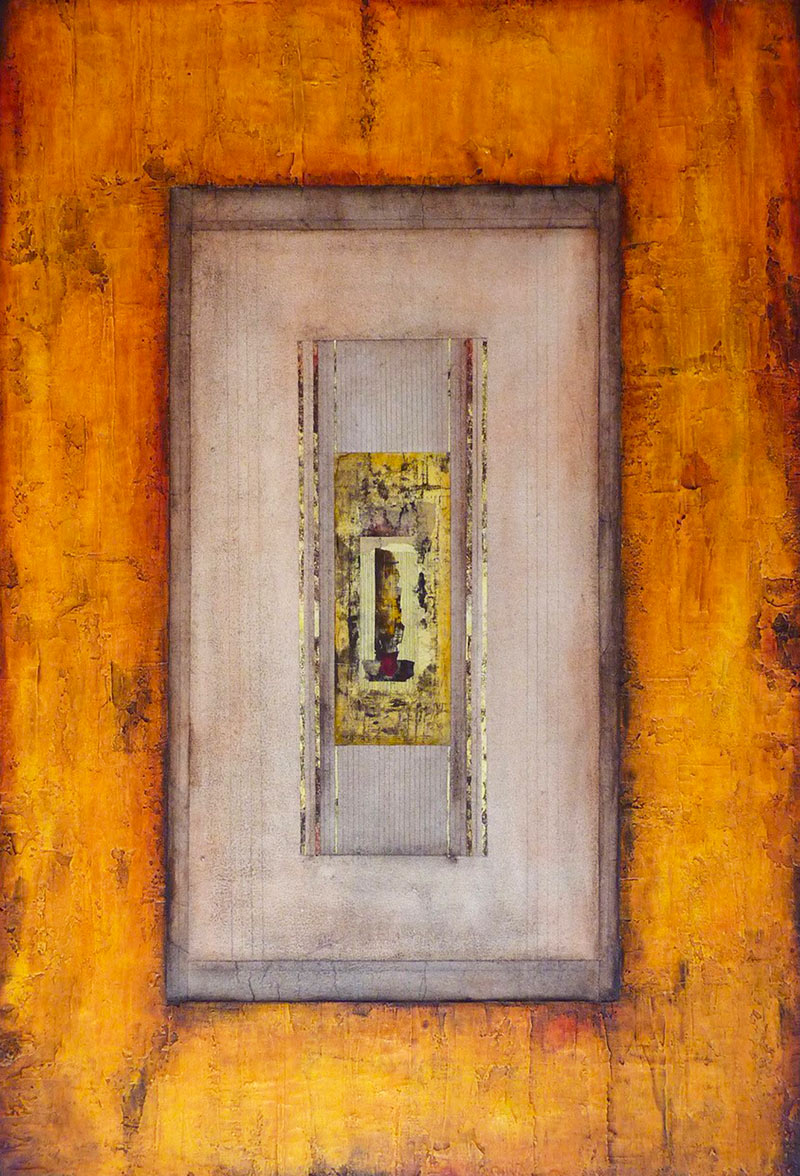
Un rythme sur fond jaune
Huile, matières, pigments, papier, eau-forte et crayon gris sur toile
120 x 80 cm
2015
Collection privée Genève
En 2001, travaillant au Musée d’Art et d’Histoire de Genève elle s’inspire de plusieurs œuvres classiques et réalise une série de 150 dessins (crayon gris sur papier). De ces dessins elle réalisera une série de peintures nommées « Réminiscences ».
En 2005, ayant l’envie d’élargir ses horizons et de trouver de nouvelles idées pour sa pratique artistique, elle décide de s’inscrire à l’Université Paris I Sorbonne. Son objectif c’est de préparer un autre master en arts plastiques, cette fois-ci, plus lié à la recherche de nouvelles techniques et d’inspirations et de trouver également de nouvelles idées pour sa pratique artistique, tout en gardant le fil conducteur qui est la synergie entre la musique et les arts plastiques. Elle réalise ainsi une recherche dans le but d’approfondir différemment sa réflexion créatrice. Le titre de ce travail pratique et de réflexion et celui du master sera « Rythme et mouvement continu ».
Dans cette recherche Miriam Da Silva vise à confronter son travail avec quelques périodes de l’histoire de l’art qu’elle apprécie, allant de la renaissance italienne à l’art contemporain. Elle analyse par exemple le travail de plusieurs artistes qui l’ont inspiré tout au long de son parcours, comme par exemple : Léonard De Vinci, Rembrandt, Ingres, Paul Klee, Amselm Kiefer, Gerhard Richter, Sol Lewit, Jesus Rafael Soto, entre tant d’autres. Elle devra réaliser pour ce master un travail final à l’écrit, le « mémoire » et un travail pratique qui devra montrer une réflexion et une évolution de sa pratique artistique. Pour ce travail Miriam Da Silva garde son lien avec la matière, mais différemment, en utilisant de nouveaux matériaux tels que le bois, le miroir, la peinture synthétique, etc, en jouant avec les effets de reflets qui engendrent certaines œuvres et faisant une analyse là-dessus. Le thème est le rythme et comment il se traduit dans sa vision et dans son interprétation. Miriam Da Silva obtient le « Master – recherche en arts plastiques » en 2008.
Parallèlement à son travail d’artiste, Miriam Da Silva enseigne dans les écoles privées et publiques de l’Etat de Genève. Gardant aussi l’enseignement comme une possibilité professionnelle de plus, elle décide en 2009 de s’inscrire à L’Université de Genève pour étudier la « Didactique des arts visuels ». Elle obtiendra le master en 2013, ce qui lui donnera, de manière plus solide, le droit d’enseigner dans les collèges en Suisse et en Europe.
En dehors de son travail artistique, Miriam Da Silva a voyagé ces derniers ans en Europe, Brésil, Etats Unis, Inde Thaïlande et au Japon.
Son travail et sa réflexion artistique gagnent une nouvelle ouverture ces dernières années et plusieurs œuvres voient le jour sur cette nouvelle enseigne. De cette période elle réalisera deux séries de peintures avec des thèmes différents. Miriam Da Silva réalise plusieurs expositions en Suisse et Europe et continue à développer son travail, cherchant de nouvelles inspirations, mais gardant le même fil conducteur de toujours, qui est définitivement la synergie entre le ton chromatique et le son musical.
In 2001, working at the Geneva Museum of Art and History, she was inspired by several classic works and produced aseries of 150 drawings (gray pencil on paper). From these drawings she will realize a series of paintings called « Reminiscences ».
In 2005, wanting to broaden her horizons and find new ideas for her artistic practice, she decided to enroll at the University of Paris I Sorbonne. His goal is to prepare another master’s degree in visual arts, this time, more linked to the search for new techniques and inspiration and also to find new ideas for his artistic practice, while keeping the common thread that is the synergy between music and the visual arts. She thus carries out research in order to deepen her creative thinking in a different way. The title of this practical and reflective work and that of the master will be « Rhythm and continuous movement ».In this research Miriam Da Silva aims to confront her work with some periods of art history that she appreciates, ranging from the Italian Renaissance to contemporary art. For example, she analyzes the work of several artists who have inspired her throughout her career, such as: Leonardo Da Vinci, Rembrandt, Ingres, Paul Klee, Amselm Kiefer, Gerhard Richter, Sol Lewit, Jesus Rafael Soto, between so many others. She will have to carry out for this master a final written work, the « thesis » and a practical work which will have to show a reflection and an evolution of her artistic practice. For this work Miriam Da Silva keeps her link with the material, but differently, by using new materials such as wood, mirror, synthetic paint, etc., by playing with the effects of reflections that generate certain works and by making an analysis on that.
The theme is rhythm and how it translates into its vision and interpretation. Miriam Da Silva obtained the « Master -research in plastic arts » in 2008.Along with her work as an artist, Miriam Da Silva teaches in private and public schools in the State of Geneva. Also keeping teaching as another professional possibility, in 2009 she decided to enroll at the University of Geneva to study « Didactics of the visual arts ». She will obtain the master’s degree in 2013, which will give her, in a more solid way, the right to teach in colleges in Switzerland and in Europe.Apart from her artistic work, Miriam Da Silva has traveled in recent years in Europe, Brazil, United States, India Thailand, and Japan.His work and his artistic reflection have gained a new opening in recent years and several works are emerging on this new sign. From this period, she will realize two series of paintings with different themes. Miriam Da Silva realizes several exhibitions in Switzerland and Europe and continues to develop her work, seeking new inspirations, but keeping the same common thread of always, which is the synergy between the chromatic tone and the musical sound.
MENU
